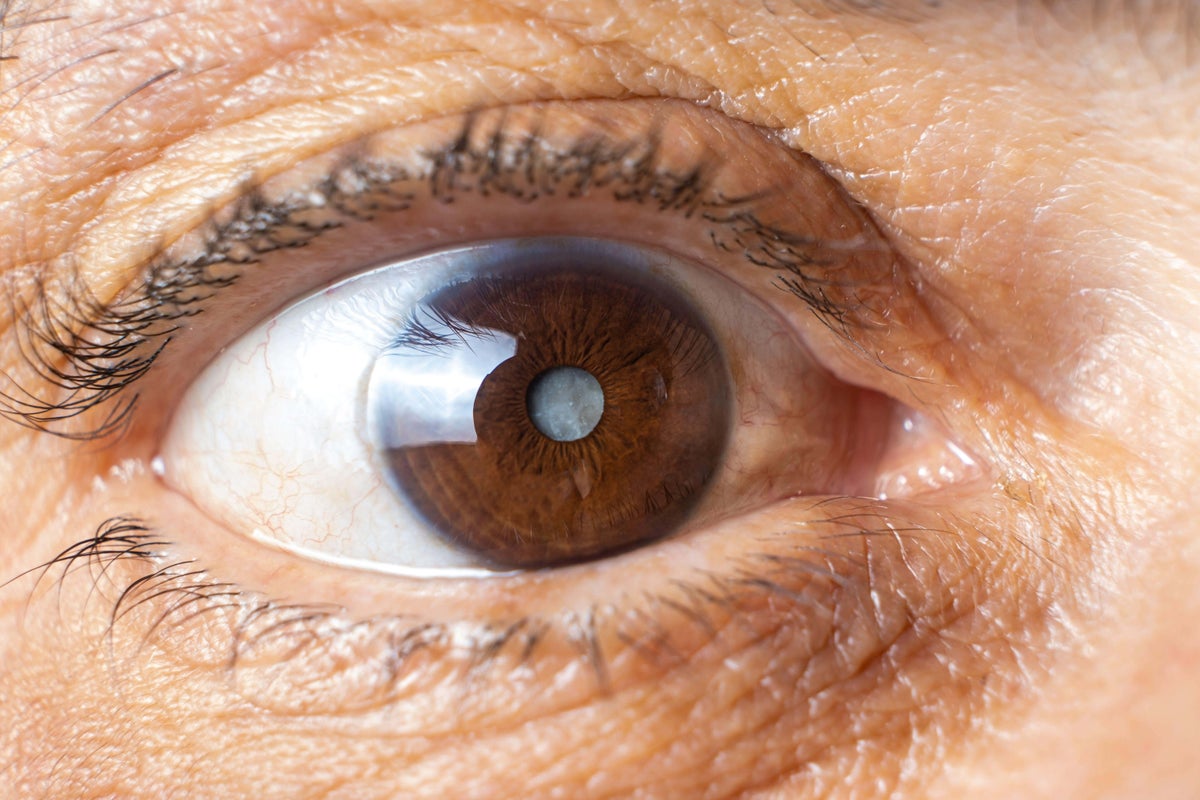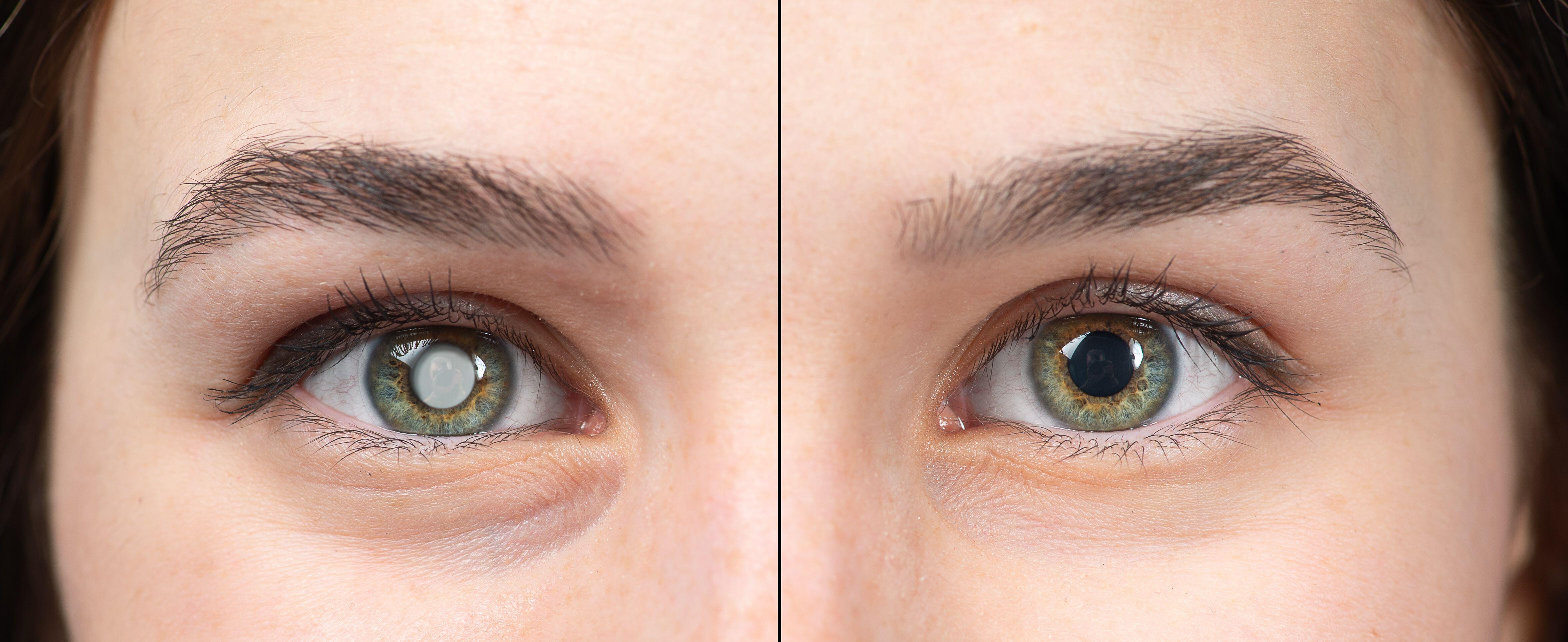
Many of us chalk increasingly blurry vision, faded colours and struggles with driving in the dark up to fatigue or age – but these subtle changes could be early signs of a cataract.
Cataracts develop slowly, often without pain, making them easy to overlook until they significantly affect vision.
We got in touch with Mr Fadi Alfaqawi, consultant ophthalmic surgeon at Optegra Eye Health Care, who has outlined some common cataract symptoms to look out for and has recommended the best time to seek professional care, because when it comes to your vision, early detection can make all the difference.
What are cataracts?

“Cataracts are very common. It is when the lens inside your eye becomes cloudy and loses its ability to focus the light on the retina and to transmit enough light to the retina,” says Alfaqawi.
The most common type is called an age-related cataract, and according to the NHS website you are more likely to develop a cataract if you are aged 60 or over. However, younger people can also develop cataracts too.
“For example, newborns can develop congenital cataracts,” says Alfaqawi. These cataracts present when a baby is born or shortly afterwards, according to the NHS website.
People can also develop traumatic cataracts later in life.
“When people experience a trauma/injury to the eye, the lens can change and become cloudy,” explains the consultant ophthalmic surgeon. “Some people can even develop a cataract in their eye if they experience significant electrical shock, but this is less common.
“Other causes that can increase the development of cataracts include conditions like diabetes and long-term use of certain medications like steroid tablets. Smoking and exposure to ultraviolet light are also known to increase/accelerate the progression of cataract development.”
What are some early warning signs to look out for?

1. Blurred vision
“One of the most common symptoms and signs of a cataract is blurry or cloudy vision, which almost feels you are looking through a foggy window,” highlights Alfaqawi.
2. Increased light sensitivity and glare
“Another early sign of a cataract is an increased sensitivity to light and glare, especially from headlights on the road at night,” says the consultant ophthalmic surgeon.
3. Halos
“Also look out for halos around lights, which are often described as glowing rings,” recommends Alfaqawi.
4. Faded colours
“Another red flag is faded colours which make the world around us look less vibrant,” he adds.
5. Frequent changes in prescriptions
“Frequent changes in glasses’ prescription without clear improvement is a sign that might indicate that you have a cataract,” says Alfaqawi.
6. Difficulty seeing in low light
“Difficulty seeing in low light is another symptom which might occur when reading a menu in dimly lit restaurants, for example,” notes Alfaqawi.
7. Double vision
“Double vision in one eye is another red flag and can be extremely disorienting,” says Alfaqawi.
The consultant ophthalmic surgeon advises anyone experiencing any of the seven symptoms listed above to go and get their eyes checked.
Why is it important to diagnose and treat cataracts as soon as possible?
“Having good sight is important for wellbeing, and cataracts can significantly hinder a patient’s quality of life,” explains Alfaqawi. “People who start to develop early cataract signs like glare from a car’s headlights can find it very difficult and worrying to drive in the evening or at night. In addition, being unable to clearly see things like the pavement or stairs, or struggling to judge the depth of perception makes you more susceptible to falls and trips.
“Getting timely help and treatment can help patients see faces, administer medications themselves, and enjoy hobbies and activities like reading, which all improve the quality of someone’s life.”
Many people think you have to wait for the cataract to become really bad before you have surgery, but Alfaqawi stresses that this is not the case.
“Delaying treatment until the vision is very, very poor, is not helpful because when you wait for the cataract to become very dense, it actually increases the complexity of the surgery and also increases the risk of complication,” says Alfaqawi. “If your sight is affecting your quality of life, ask to be referred for assessment for cataract surgery.”
How often should you get your eyes checked?
“Most people are advised to see their optician at least once every two years, but there are certain people who will be required to see their optician once every year or to have more frequent follow ups,” says Alfaqawi. “Your local optometrist can easily detect a cataract and can offer advice on whether you need a referral for treatment.”
How are cataracts treated?

“Unfortunately cataracts will not improve on their own and tend to only get worse. But the good news is that the treatment is quick, painless and truly life-changing, so there is no need to wait if you started to struggle with your vision,” says Alfaqawi. “Cataract surgery is very effective and very safe and it usually only takes 10-15 minutes for a cataract to be removed.
“It’s a painless procedure and most patients enjoy improvements in their vision within few days after the surgery, but the eye continues to heal for up to four to six weeks after that.”







